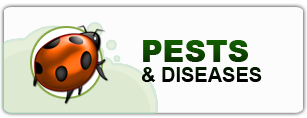WASHINGTON, Dec. 7, 2012 – The U.S. Department of Agriculture (USDA) today awarded five grants totaling $4.5 million in support of research to improve the production of the common bean, a main staple produced throughout food insecure areas of the world, including East and Southern Africa. The awards were made by USDA’s National Institute of Food and Agriculture (NIFA) in coordination with the U.S. Agency for International Development (USAID). USAID provided the funds for the grants.
“Over the next 50 years, we will need to produce roughly as much food for the world’s population as has been produced in the entire history of mankind,” said Catherine Woteki, USDA’s Chief Scientist and Under Secretary for Research, Education and Economics. “A challenge this serious and urgent requires the best and brightest ideas in food and agricultural science. The projects awarded today have the potential to unlock those ideas and improve the production of one of the world’s most vital food crops.”
The funded projects will work to address challenges to common bean production faced by smallholder producers. The program is part of the government-wide Feed the Future Initiative, President Obama’s whole-of-government global hunger and food security initiative which supports country-driven approaches to address the root causes of hunger and poverty and forge long-term solutions to chronic food insecurity and under-nutrition. The partnership is also part of the USAID-USDA Norman Borlaug Commemorative Research Initiative, which addresses food security needs by linking U.S. research and scientific innovations to effective adaptations in the fields across developing countries.
“This new research will help us solve critical production and disease constraints in common bean, the most important grain legume in human diets,” said Julie Howard, Chief Scientist with USAID’s Bureau for Food Security. “Because common bean is the primary staple crop for over 200 million Africans and cultivated mostly by women, the potential impact of more productive, disease-resistant varieties on household nutrition and incomes in our Feed the Future countries is substantial. We are pleased to support this collaborative approach to tackling some of the most challenging problems affecting legume productivity, one of Feed the Future’s primary research themes.”
The five projects awarded today will provide research for two core focus areas:
- Reducing production constraints from soil-borne pathogens: Soil-borne pathogen pressure on the common bean is a significant constraint to production. Such pathogens and associated root rots significantly reduce production in areas with high rainfall. As rainfall increases, as is expected around the equatorial zone in Africa, in particular East Africa, pathogen-related production constraints may become even more prevalent. The goal of the project is to provide a package of approaches, such as new seed varieties coupled with culturally and economically relevant crop and soil management methods, to smallholder common bean producers in Africa.
- Improving transformation technologies in the common bean: Although success in transforming the common bean has been limited to date, new research shows that it is a promising strategy that can overcome the key production constraints. NIFA funded projects will work to developed new methods that can achieve improvements in common bean breeding practices in order to integrate the desired quality traits into new breeds.
Funding in fiscal year 2012 was awarded to the following institutions:
- Iowa State University, Ames, Iowa, $250,000 – Routine and reproducible transformation system for the common bean
- Michigan State University, East Lansing, Mich., $1,900,000 – Developing and delivering common bean germplasm with resistance to the major soil borne pathogens in East Africa
- University of Nebraska, Lincoln, Neb., $250,000 – Development of transgenic beans for broad-spectrum resistance against fungal diseases
- University of Nebraska, Lincoln, Neb., $1,100,000 – Genetic approaches to reducing fungal and Oomycete soilborne problems of the common bean breeds in Eastern and Southern Africa
- Cornell University, Ithaca, N.Y., $1,000,000 – Improving bean yields by reversing soil degradation and reducing soil borne pathogens on small-holder farms in Western Kenya
USDA encouraged project leaders to make connections with ongoing and relevant projects such as the Common Bean Coordinated Agricultural Project and USAID’s Dry Grain Pulses CRSP. USDA also encouraged applicants to develop projects that develop content and programs suitable for delivery through existing Extension programs, such as the eXtension Plant Breeding and Genomics Community of Practice and the Legume Pest Information Platform for Extension and Education.
As the world’s largest agricultural research institute, USDA is focused on reducing global hunger by increasing global cooperation and collaboration on research strategies and their implementation. For example, through Feed the Future, USDA and USAID are coordinating their research portfolio with ongoing work of other donors, multilateral institutions and government and non-government entities at the country level to effectively improve agricultural productivity, reduce food insecurity and generate economic opportunity. Under Feed the Future, research investments in global food security have more than doubled. Previous research has focused on wheat rust; aflatoxin, a toxic fungus that infects many crops and causes illness; developing a vaccine for East Coast fever, a major killer of cattle in east Africa; and supporting enhanced livestock and grain legumes production.
#
Media Contact: Jennifer Martin, (202) 720-8188
USDA is an equal opportunity provider and employer. To file a complaint of discrimination, write to USDA, Assistant Secretary for Civil Rights, Office of the Assistant Secretary for Civil Rights, 1400 Independence Avenue, S.W., Stop 9410, Washington, DC 20250-9410, or call toll-free at (866) 632-9992 (English) or (800) 877-8339 (TDD) or (866) 377-8642 (English Federal-relay) or (800) 845-6136 (Spanish Federal-relay).
This news release is a service of the USDA’s National Institute of Food and Agriculture. To view other agency news, visit http://www.nifa.usda.gov/
Follow us on Twitter: http://www.twitter.com/USDA_




Howard Schwartz and Marie Langham (National Coordinators)
Warmer conditions favored late-season common bean development and maturity in many regions of the U.S. and Canada. Tropical storm activity in eastern U.S. negatively affected legume crops. There were scattered reports of legume viruses, bacterial diseases, common rust and white mold throughout the legume production region during 2011.
Contact your local legume industry personnel, university and USDA personnel to stay on top of events that may influence legume crops, pest management issues and pesticide options for the 2012 season. New diagnostic cards have been posted on this web site, and copies are available from your local legume specialists.
A real-time price discovery tool from Multigrain Intl. and weather highlights and forecasts from ZedX were updated this year to help you with disease, pest and crop decisions. Prices continue to trend upward for legumes like pintos.
Thank you for your support and participation in this Legume ipmPIPE project during 2011.